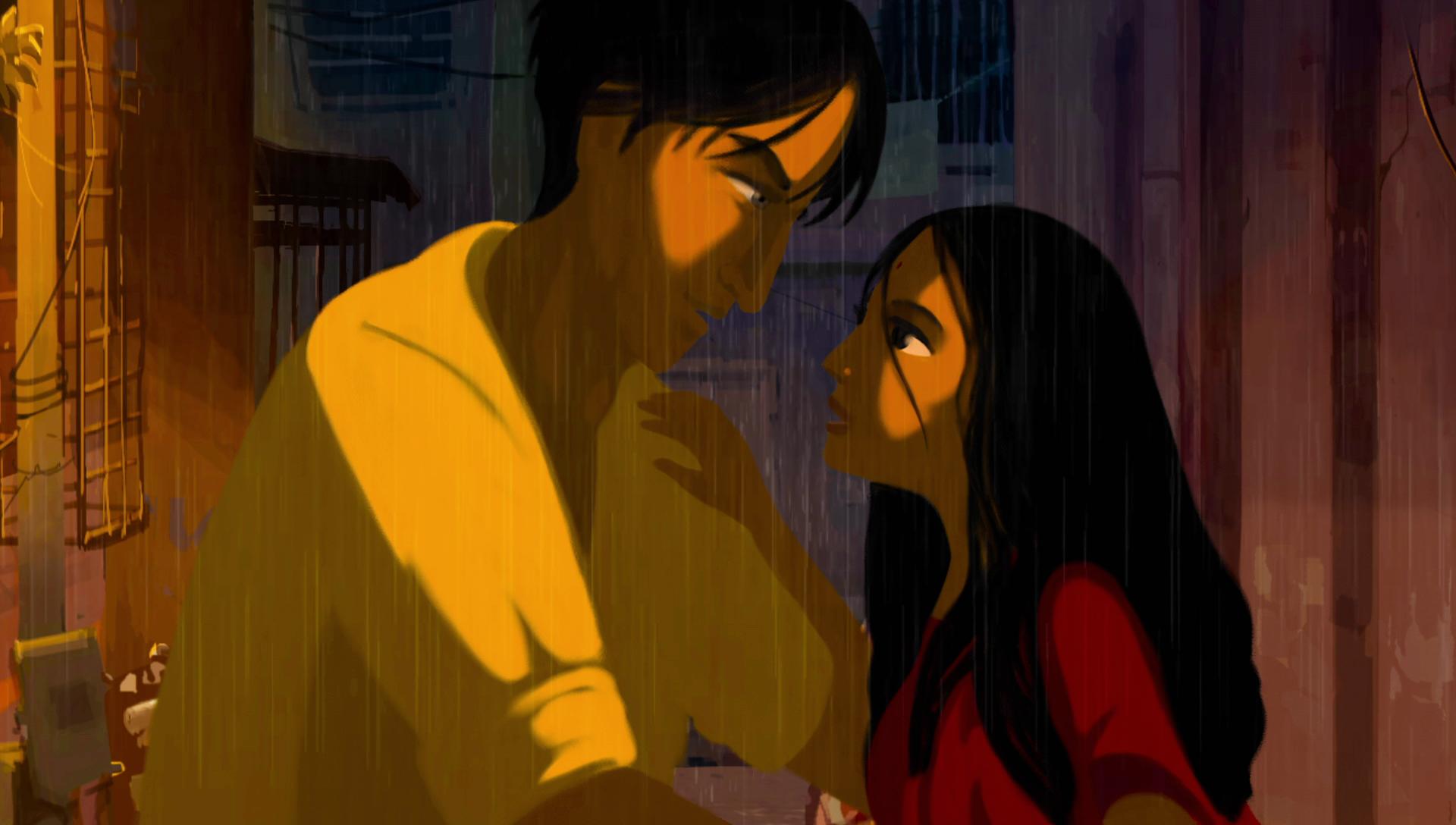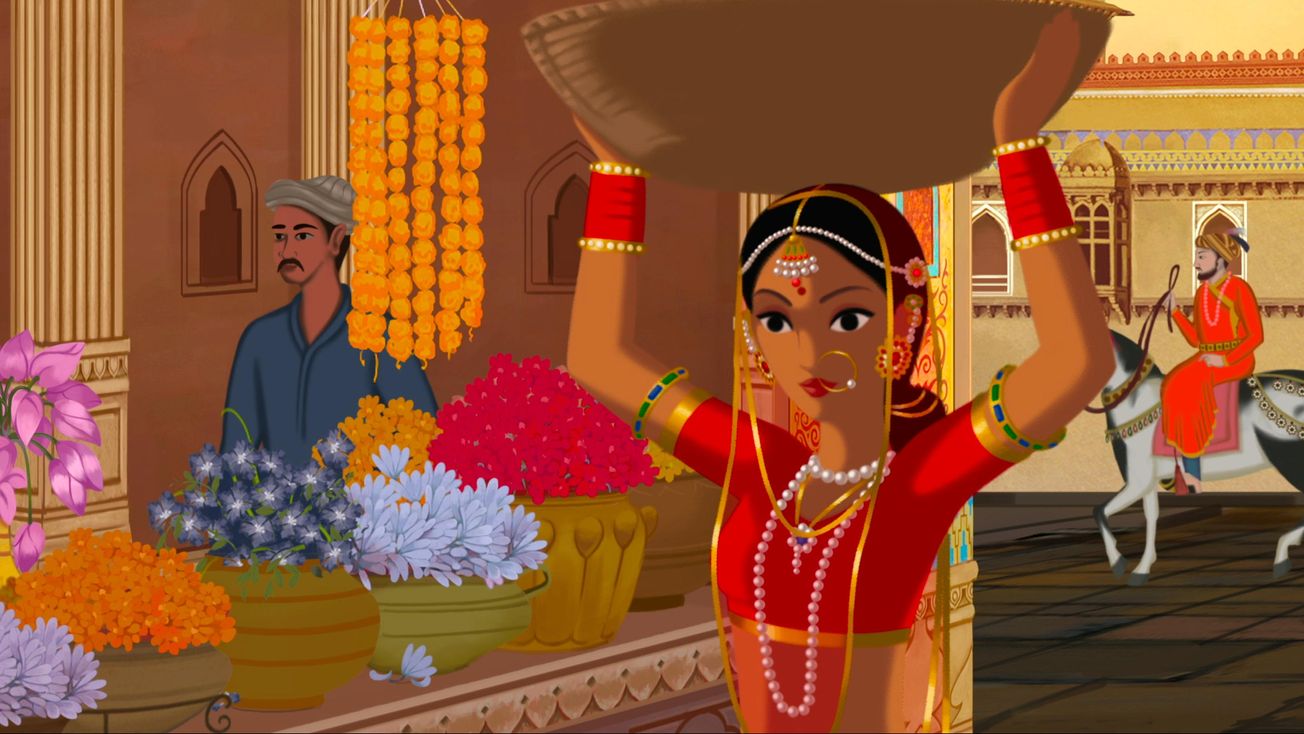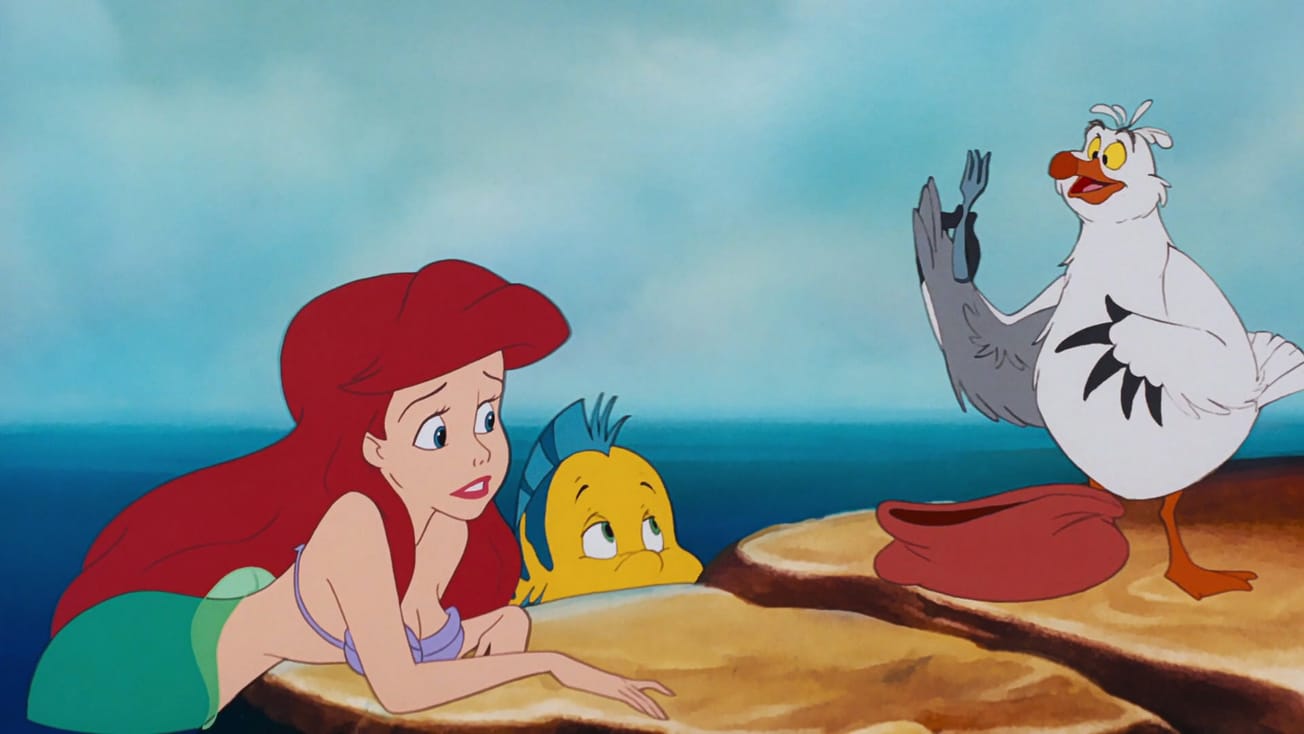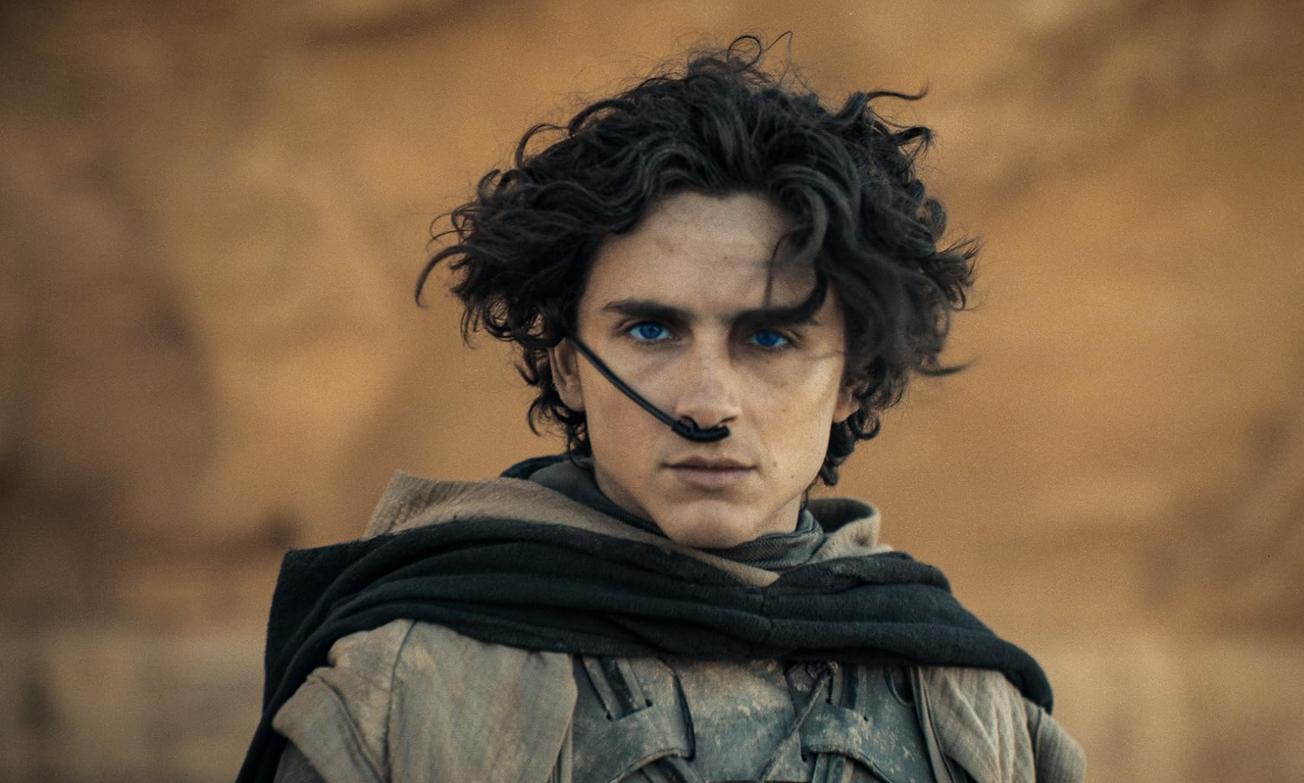By Jack MacDonald, Film & Television MA
Nothing celebrates the form and mechanics of cinema like the juggernaut that is the Bollywood film industry. Bollywood has famously maintained a close and intimate relationship with its audiences which takes off in these energetic, vibrant fantasies through stories around the themes of dark and light.

This particular animated film represents those ideals and much more. Bombay Rose (2019) is an excellent example of how cinematic experiences can induce emotion in the audience, and this is demonstrated, and heightened, by juxtaposed scenes of fantasy surrealism and moments of defined authenticity. Bombay Rose has a handful of storylines that intersect and form part of a visually distinctive (but flawed) portrait of love and family connections. There are narrative segues involving a burgeoning romance between the flower-seller Salim (Amit Deondi) and Kamala (Cyli Khare) and the growing entanglement with a malevolent club owner who seeks to claim ownership of Kamala.
A further thread centres on Kamala’s sister Tara (Gargi Shitole) bonding with the former Bollywood silent screen actress and now English teacher, Mrs D’Souza (Armardeep Jha). Tara’s plotlines are fleshed out by encounters with a deaf-mute orphan boy and her efforts to save him from police detainment over working labour laws. This is paralleled by Mrs D’Souza coming to terms with the death of her husband and potentially finding love again in antique store owner Anthony (Shishir Sharma). He is apparently fascinated by Kamala’s grandfather’s (Virendra Saxena) skills and dexterity in repairing broken toys.

A number of subplots and arcs which, unfortunately, don’t entirely weave together to create a strong outcome. A tighter script could have allowed for a more streamlined narrative, making the film more rewarding. This issue, however, is offset by a completely impressive visual experience. First time animation feature director Gitanjali Rao fills the screen with this lovely water-colour palette which not only injects the characters with a movement and agency of their own, but allows the filmmakers to highlight character motivations. One such allegorical example are the distressing dream sequences where the villainous club owner is represented as a predatory hawk. Bombay Rose is a timely piece that could change the way Bollywood cinema depicts characters and stories in animation, subverting them for representations of almost fresh and inviting portraits of everyday characters and gender roles. It is a testament to how cinema can create an audacious and powerful statement of positive representation that comes through with the notable use of animation here.
The female biopics to check out today
International Women's Day: how has the female protagonist evolved on-screen?
As I say, there are a lot of storylines on display: this is a crucial weakness of the film, in that it introduces subplots but never gives each one as much breathing space, reducing its overall impact. There are too many transitions which put the scenes out of kilter within the drama; perhaps some compression could have created a stronger, more focussed drama. But the luscious, detailed animation and character insight on display here is really phenomenal. With a tighter narrative, the film could have been something even deeper, and maybe, extraordinary. As it is, it is a beautifully designed marriage of elements, that explore feminist, human, and role-defying notions of characters and themes that come vividly to life on screen.
Featured: IMDb
Do you enjoy Bollywood cinema?









